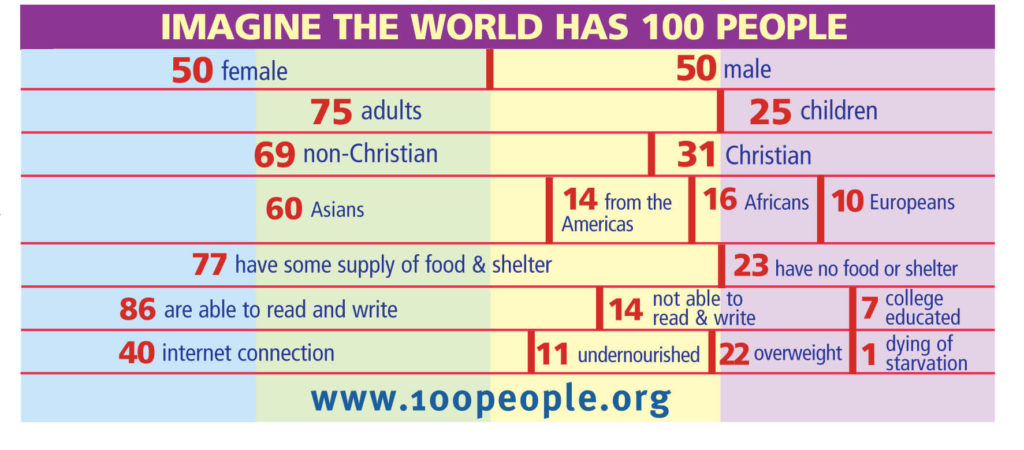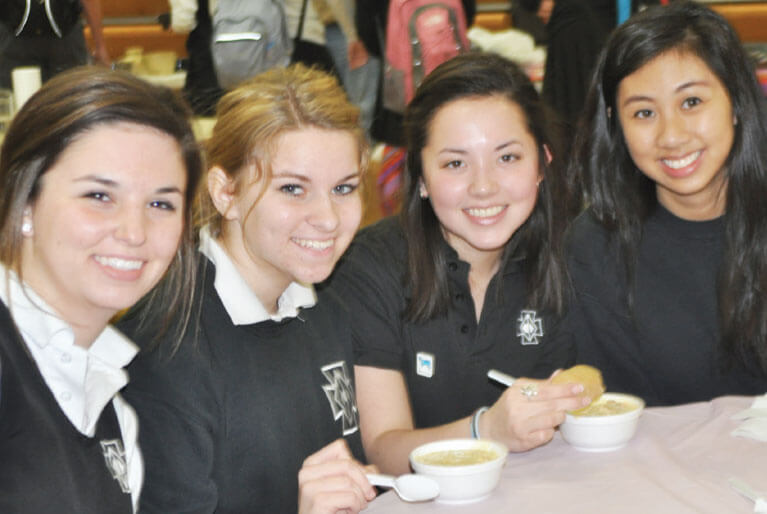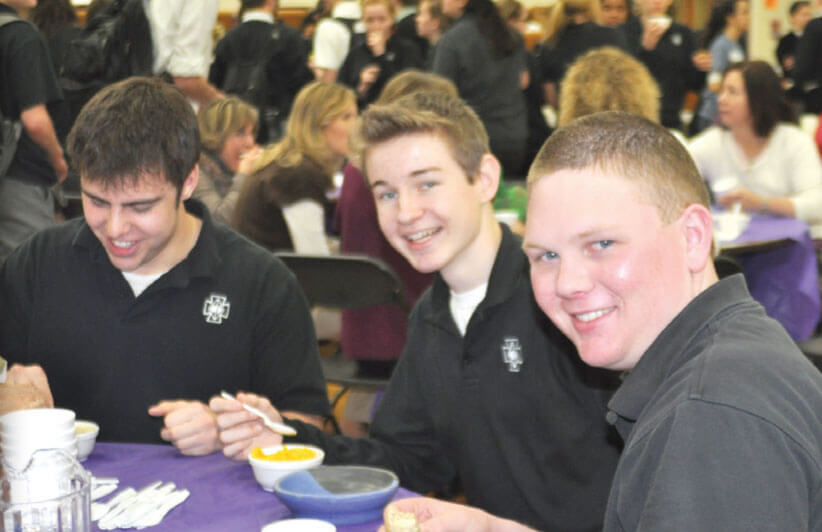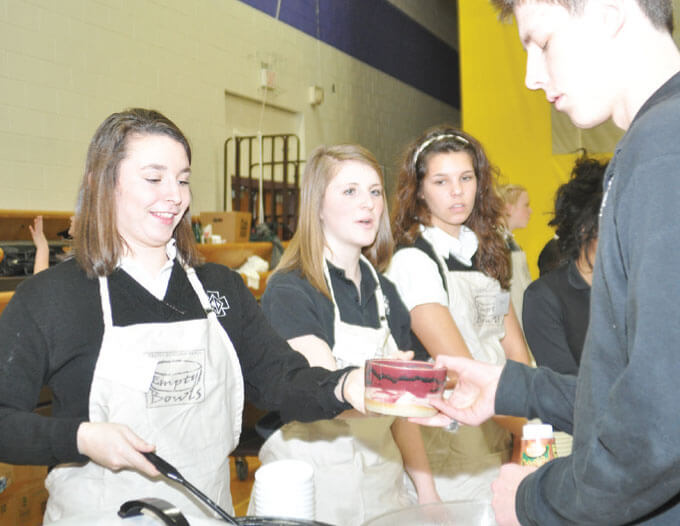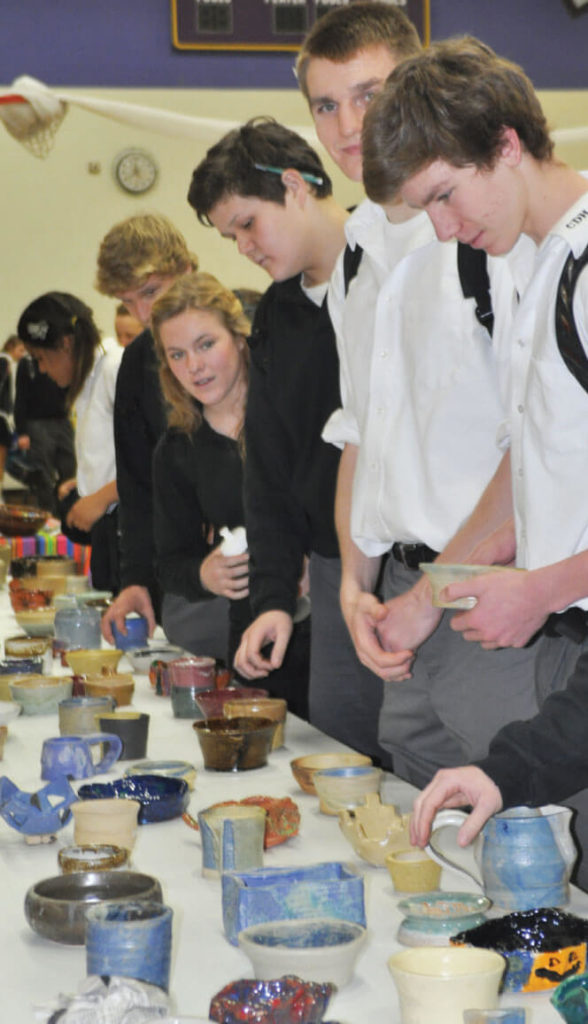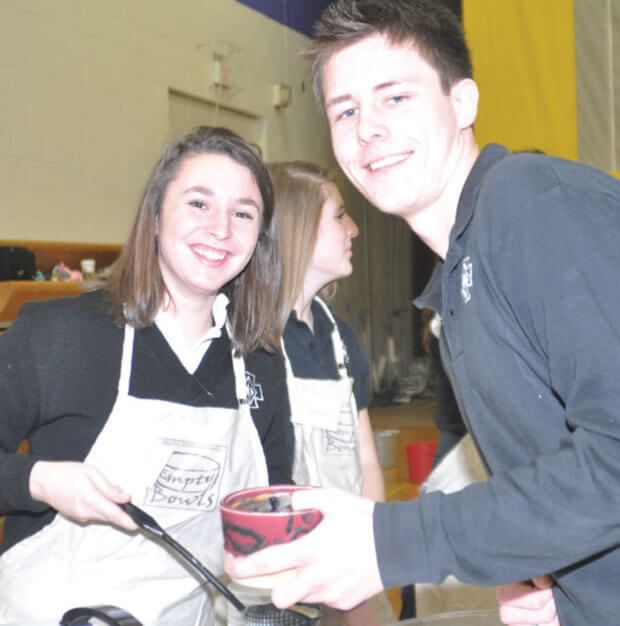by Joan Mitchell, CSJ
One family has helped keep the Empty Bowls project going at their Catholic high school. Junior Daniel Goldenstein has inherited the job of co-chairing the project from his two older sisters..
“I’ve heard from both students and faculty that Empty Bowls is their favorite day of the year,” says cochair Laura Modl. “Recently we hosted several high schools for a Youth Justice Summit. Several of those students named Empty Bowls as the highlight of the Summit day.”
Abby Nachtsheim discovered the Empty Bowls Project when she went with her parents to a benefit at a local arts center. The potters at the center had made hundreds of simple, beautiful bowls. The money from the sale of the bowls went to a local food shelf.
Empty Bowls describes itself online as a movement to end hunger. It keeps an online calendar of Empty Bowl fundraising events around the U.S. and world. Funds are for “Helping Feed People in Need.”
When Abby received a religion class assignment to do a service project and put Catholic social teaching into practice, Empty Bowls seemed perfect. Abby described the project to her classmates who voted to do it in their school — Cretin Derham Hall High School. They decided to combine selling bowls and serving a soup lunch and dinner.
Abby and Jenny led the project for four years. Then Abby’s brother Andy and Jenny’s cousin Rachel Goldenstein carried on. Rebecca Goldenstein followed Rachel, and now Daniel is the latest family member taking his turn co-chairing the event.
Laura remembers two girls speaking to her values class about Empty Bowls. “I helped clean tables, fill water pitchers, and re-stock the tables my first year,” says Laura. “At the end of my first year Amanda Graff and Becca Goldenstein asked me to be part of the coordinating team.”
Laura has helped make Empty Bowls happen ever since. As co-chair her work extends before and after the event. “In the months prior to the fundraiser I help make phone calls, sit at tables promoting the events, send letters to donors, go personally to businesses to ask for donations, and help pick up soup and bread. Afterward we send out certificates and thank yous,” says Laura.
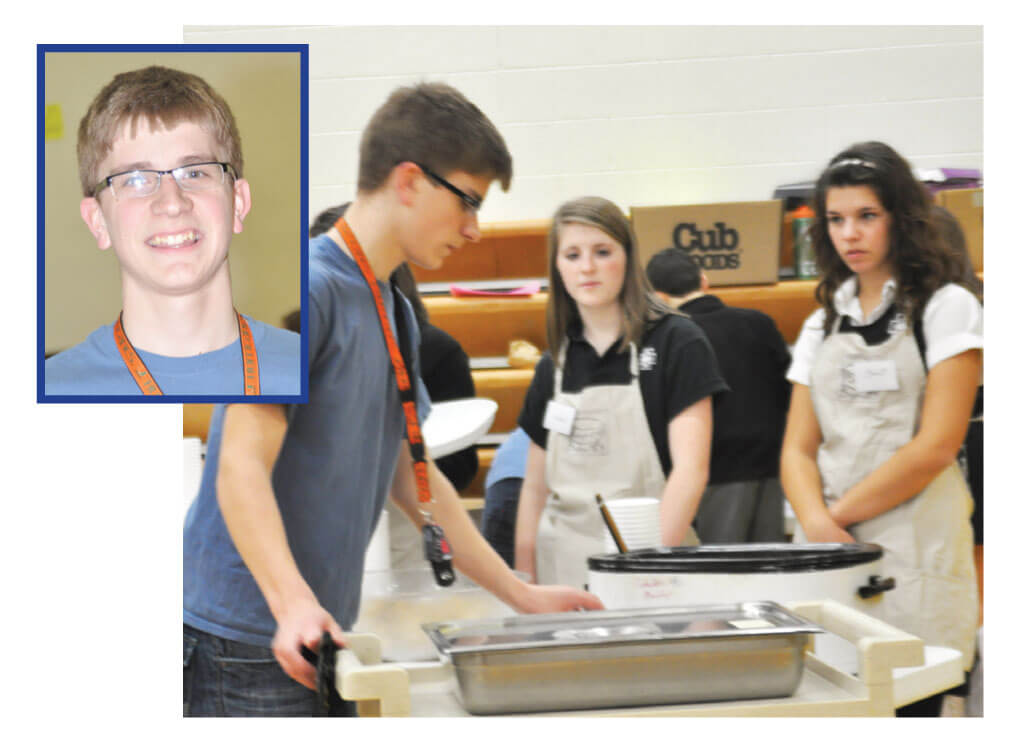
Daniel Goldenstein 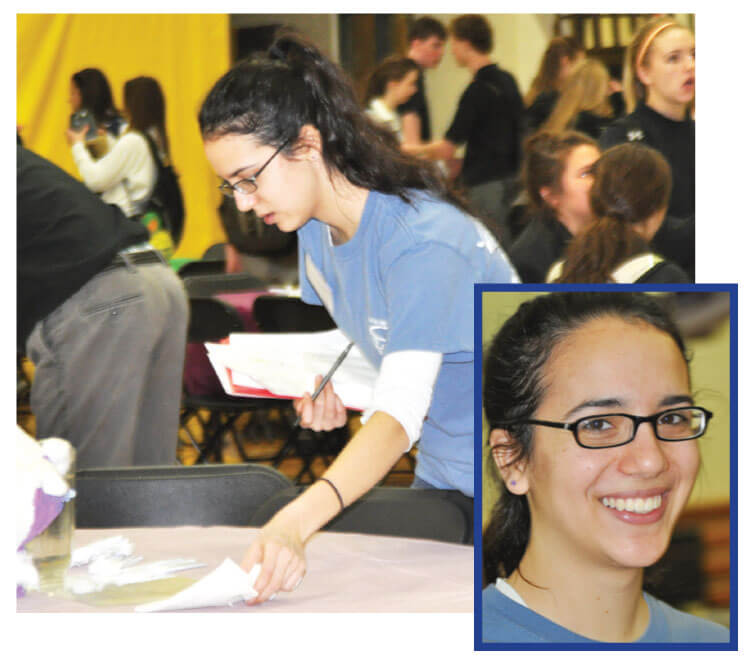
Laura Modl
Empty Bowls has grown over the ten years. “We are working on making the event bigger and bigger but its original goals are still there. It’s still a simple meal to end hunger,” says Laura. “I love seeing how generous people are with their time and their money; it’s like Empty Bowls brings out the best in people.
“This year especially I was very impressed with the volunteers. It’s so satisfying at the end of the day to accomplish this big thing and make someone’s life better. It’s one of the best feelings.”
The co-chairs organize student volunteers to set up and clean up, to take money, dish soup, and sell bowls. Students change lunches every 22 minutes.
This is a student-led project, though they rely on faculty and staff for help. “I support them by doing the chump stuff,” reports campus minister Peter Gleich. “I get the roasters from the school kitchen to keep the soup hot. I have tables delivered to the gym so the kids can set them up.”
The cafeteria staff heats the soup. The ceramics teacher has all her classes make bowls.
“Getting the bowls is not really a problem,” Daniel explains. “We have the total cooperation of the art department. So our students make bowls in class, and so do kids at Nativity Grade School nearby — every year.”
On the day of the event Daniel rumbles down the hall from kitchen to gym with a huge roaster of soup hot on a cart. Laura walks the floor of the gym between the many tables ready for lunch, making sure tables have water. Students walk along a table with the ceramic bowls and choose one for their soup. Or, they take a paper bowl, and choose one of the soups.
“I definitely have an appreciation for the amount of work and organizing that can go into a one-day event,” says Laura. “But I think just the fact that this whole event, that has lasted for ten years, was started by two freshman girls who had this brilliant idea, is inspiring. It gives you the feeling that you can do anything as long as you’re willing to work hard.”
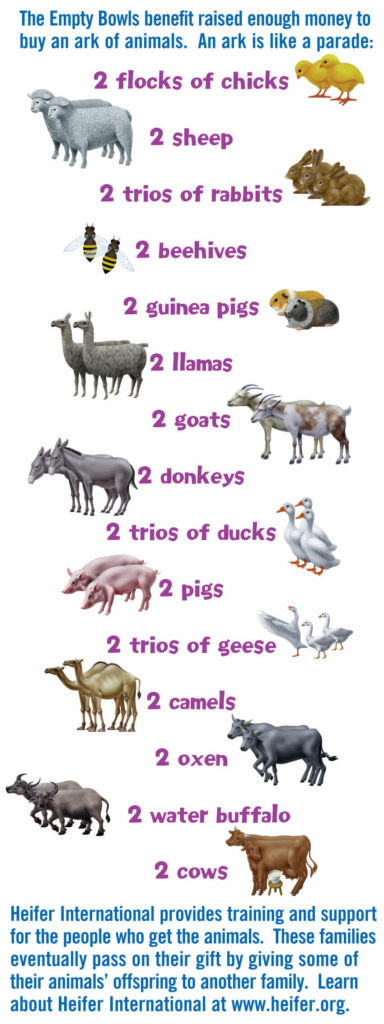
From the beginning the Empty Bowls project has raised money for Heifer International, an organization that began after World War II when Europe needed to rebuild. A man named Dan West helped provide milk, but when he experienced how fast cups of milk went, he asked himself, “Why not a cow rather than a cup?”
West began raising money and sending heifers to Europe. Heifers are young cows just ready to calf and give milk. Families that receive animals commit to pass on their gift by giving another family the first offspring from the animal.
Today Heifer provides training and animals for families in developing nations and poor sections of the U.S. For $5,000 a school can buy an ark, two each of all the animals Heifer provides. The organization buys animals in the country where they will be raised. Plaques stretch above the lockers in the main hallway, honoring the school for the many arks it has funded.
“I have a lot of faith in Heifer International,” says Laura. “They fit the solution to the problem. Every village is different. They offer the recipients of the animals a say in their futures. They help the people help themselves, so in a way Heifer not only works to end poverty but also empowers people to become self-sufficient and pass on the gift to someone else.
“I love the way that they’re working towards a sustainable difference and helping the recipients of their animals help others in the community. It’s kind of like a domino effect that changes the lives of millions of families.
“Many students have already learned about Heifer International, and I think they really appreciate the program. They love the soup.”
